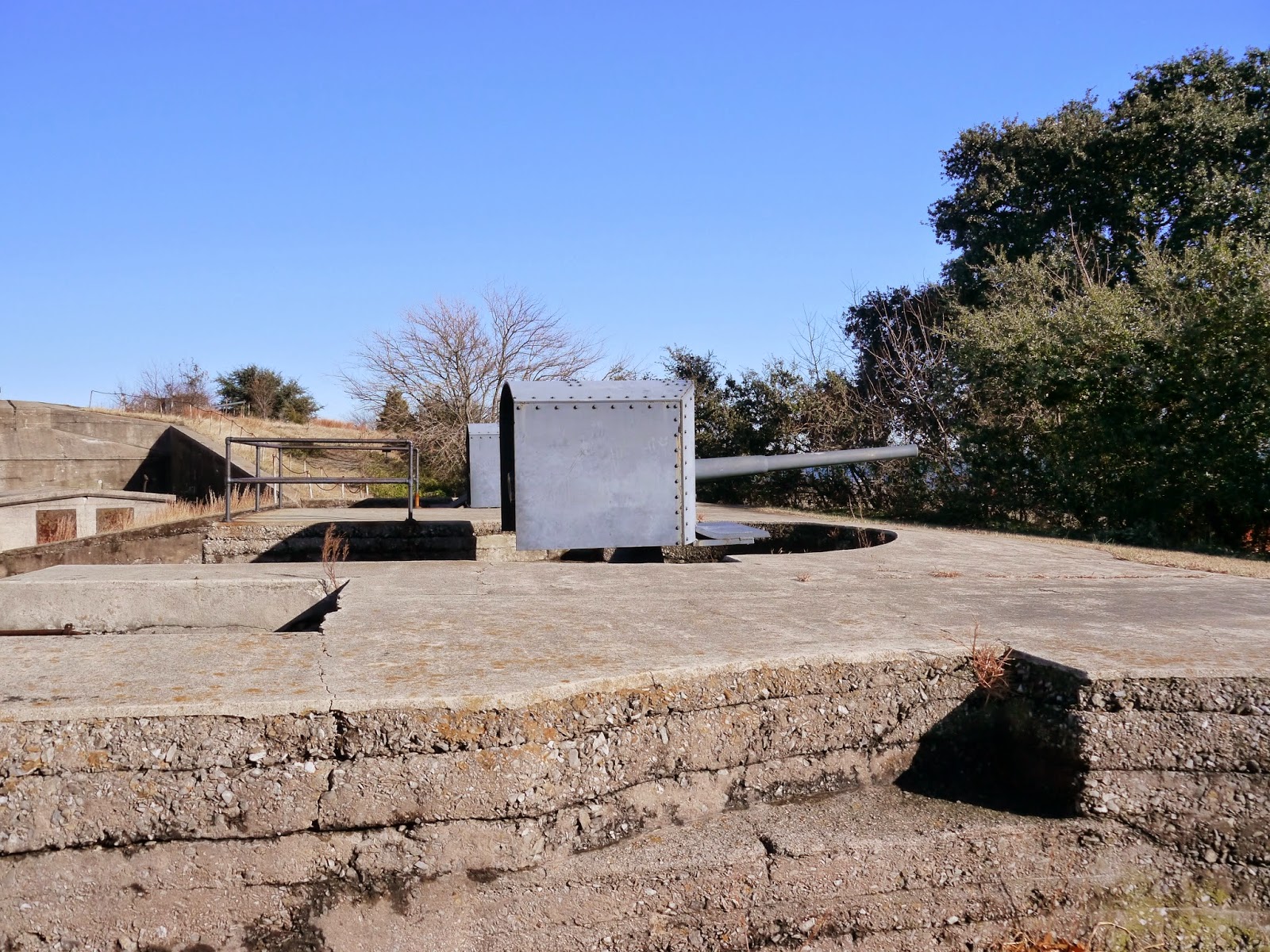I had an opportunity to visit Fort Monroe National Monument in December 2014. The monument was created on November 1, 2011 less than two months after the base was closed. There has been a fortification of some description on this point almost continuously since the time of the Jamestowne colony in the 1600s. Enslaved Africans were brought here in 1619. The fort was constructed between 1819 and 1834. Robert E Lee oversaw part of the construction as a young West Point engineering graduate. The fort remained in Federal hands during the Civil War and became part of the pathway to freedom for many slaves after General Benjamin Butler ruled that slaves at the fort were "contraband" not subject to being returned to their rebellious owners. Because of this ruling, the fort was known as "Freedom's Fortress." After the war, former Confederate President Jefferson Davis was imprisoned here for two years. The fort was the third longest actively operated base when it was deactivated in 2011. Most of the buildings are still closed to the public as detailed interpretive plans are still being developed. The Casement Museum is open and is still operated by the US Army.
 |
| Likely not part of the monument, this is the first building on the left on Ingalls Road |
 |
| Also likely not part of the monument, 90 Ingalls Road, Building 100 |
 |
| Bridge and sally port entry to the fort |
 |
| Fort Monroe had to rely on a system of cisterns for water |
 |
| Entrance to the Casemate Museum |
 |
| Jefferson Davis' cell for the first 4 months of his imprisonment |
 |
| This flag was hung in the cell so that Davis had to see it almost every waking moment |
 |
| Other casemates had been converted to living quarters |
 |
| The fort side of the casements even had large windows |
 |
| Stairs lead to the top of the fort |
 |
| Former gun installations are clearly visible |
 |
| The base expanded well past the confines of the physical fort |
 |
| Reflections in the moat |
 |
| Looking back at the Fenwick Road sally port |
 |
| Fort Monroe Command Center |
 |
| Another view of the fort and moat |
 |
| The short bridge from Fenwick Road to the sally port |
The monument also contains a couple of miles of Chesapeake Bay beaches and lots of wildlife.
 |
| Breakwater helps protect the beach |
 |
| While the fishing pier is closed to humans, it still hosts a flock of fishers |
 |
| Sewells Point and the Navy Piers |
 |
| A small Coast Guard approaches Old Point Comfort |
 |
| A wildlife viewing stand is at the north end of the monumnet |
 |
| Most of the gun batteries of the 20th century are off limits |
 |
| Battery Irwin is open to the public |
 |
| View of Norfolk from Battery Irwin |
 |
| One of the guns of Battery Irwin |
 |
| Other gun batteries will require major renovation or removal |
There is no fee to enter Fort Monroe.
There is no fee to enter the Casement Museum. Donations are accepted.
The monument website is http://www.nps.gov/fomr/index.htm.

No comments:
Post a Comment